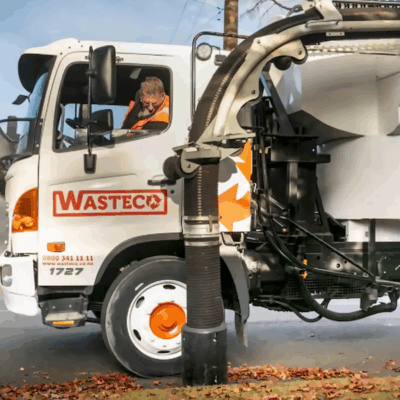Bringing print to life: the new marketing comms frontier
Print is print and online is online and the two rarely cross over, you might think. But what if you could point your smartphone at a page or poster, and it came to life?
Print is print and online is online and the two rarely cross over, you might think. But what if you could point your smartphone at a page or a poster, and it came to life? Welcome to the world of Augmented Reality (AR).
The traditional print offering with imagery produced off large presses is now being further enhanced by a mix of digital technology and print. That includes bringing AR into the mix for businesses wanting to give their customers a richer experience at a marketing level.
Rob Cranna is Blue Star’s AR Head, based at the Group’s Printlink operation in Wellington. He’s been trialling AR techniques and introducing its potential to the company’s clients in New Zealand for several months and says the technology is stirring considerable excitement.
“It is dramatically increasing the footprint for print in a marketing sense.”
What is AR exactly? Google says AR is “part reality and part what you make of it”. It’s not necessarily a new phenomenon: flight simulators have been around for decades and essentially fit that description, says Cranna. “But the world really sat up and took notice when we had the ‘Pokemon Go’ craze, where the toymakers hid the characters in different locations and people were virtually hunting for them via their phones.”
The potential to use AR has been realised in recent years as business cases for the technology have emerged.
In the print/digital mix, AR works by embedding a “marker” in an image – almost any kind of image – you train the cellphone camera on, using an app created by Blue Star partner DreemAR. The marker is triggered and this is linked to the digital content you want the customer to experience. It’s a step on from the now reasonably well-known QR codes.
Run the app over a magazine or brochure image that has a marker in it and up pops a video, a set of images, or a 3-D animation perhaps. More recently, says Cranna, AR is being used to deliver location-based services – the nearest Starbucks say – depending on where you’re standing. In each case, AR can deliver an immediate call to action to the user – which is what the marketer is after. Imagine if you could click on a player’s shirt in a World Cup match and get the player’s stats or a video of their top 10 goals. The experience can be triggered wherever the marker is displayed.
It’s an exciting new vehicle for marketing messages, but AR also provides a great way of providing information and educating users in an interactive way, says Printlink GM Katharine Williams. “It has huge potential in education, recognising that people learn in different ways and the learning can be greatly enhanced through the interactive experiences made possible by AR.”
Business case
All impressive stuff, but what is the business case? AR can enrich the customer experience, but can deliver a lot more, says Cranna. “Customers have to gain something from the experience they couldn’t otherwise get. There has to be some form of engagement at the outset.”
The experience will build loyalty to the brand, but the exercise can also deliver valuable benefits for the business such as data on their customers and the possibility of peer-to-peer referrals. “Once people engage, you can track what interests them, for example what pages they went to, and what they stayed on. And they can share the image with their friends, peers/colleagues and associates through the in-built ‘share’ icons.”
Planning is the key to making an AR marketing exercise successful, says Cranna. “The work to set up an AR experience has to happen well before the actual event or launch of, say, a new product. People need to be told in advance about it and that there is something valuable to be gained from experiencing the AR item. You want them to be intrigued in some way.
“You do need to download the ‘app’ to be able to experience it. So, for example businesses might run an ad in advance with the invitation to do so, or a note out to the database to that effect.”
Who’s it for?
So, who does AR suit? Which sectors would really benefit from the technology?
Williams says AR has huge promise for education for the interactive possibilities it presents, but also education marketing, for example to international students. “Imagine a 360-degree video of your campus facilities and vox-pops of students and lecturers, triggered off a brochure or a prospectus.”
Not-for-profit organisations could use AR to give people an experience of aid projects live and in colour – then seek a donation.
Travel and tourism businesses can take people to a host of destinations and show off the attractions and facilities from a simple brochure image – and seeking bookings (and payment).
Property companies can provide a 3-D walk-through of a development to drive interest in buying.
Kiwi examples of AR in action that Blue Star worked on include an ACC poster of a motorcyclist that can produce a video of riding tips to stay safe, and a Highlight festival billboard for the Hutt City Council with embedded videos of the acts taking part.
Cranna says AR-marketed business is definitely starting to gain traction. “Business and marketers increasingly want to be seen to be part of the digital age, and AR takes them there at reasonable cost. They are beginning to see the advantages that AR brings around data capture and customer tracking.”
And it can come together relatively quickly, he says. “Experiences can be created in as little as 48 hours – from the time the client decides to activate an experience, to the ‘go live’.
“All the hard work has been done in the development of the app. Generally, the imagery you use already exists – like the festival footage or the static images for a slide show. But they have to be good. You can’t just use anything. It has to make for a memorable experience, so in some cases you will need to develop the content.”
Cranna says AR is also changing the way a print business like Blue Star is viewed. “People see our product offering in a quite different light now because of the digital technology we can deliver through options like AR. It isn’t the answer in every case but if a business is keen to increase its marketing footprint, we’ll put this technology on the table.”






